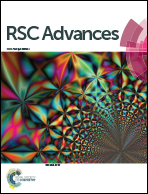Enhancing up-conversion luminescence of Er3+/Yb3+-codoped glass by two-color laser field excitation
Abstract
Improving up-conversion luminescence efficiency of rare-earth ions is always a research hotspot because of its important applications in laser source, color display, photoelectric conversion and multiplexed biolabeling. Herein, we first utilize a combined two-color laser field with the laser wavelengths of 800 and 980 nm to further enhance the up-conversion luminescence in an Er3+/Yb3+-codoped glass sample. We show that the green up-conversion luminescence intensity by the combined two-color laser field can be greatly enhanced by comparing it with the sum of that induced by the two individual laser fields. We also show that the luminescence enhancement can be attributed to the cooperative up-conversion excitation process by the energy transfer from Yb3+ to Er3+ ions via the 980 nm laser field excitation and then the excited state absorption via the 800 nm laser field excitation. These studies present a clear physical picture for the up-conversion luminescence generation and enhancement in an Er3+/Yb3+-codoped glass sample, which are very helpful for properly designing the laser field to generate or improve the up-conversion luminescence efficiency in various lanthanide-codoped luminescent materials.


 Please wait while we load your content...
Please wait while we load your content...